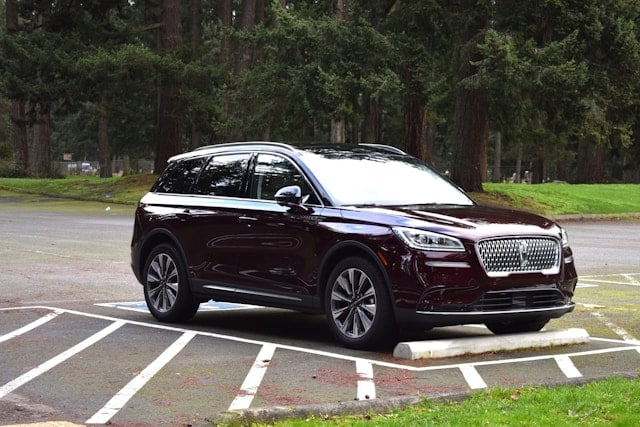
With a reputation for innovative and sophisticated design practices, Lincoln vehicles turn heads wherever they go. After a century on the market, have you ever taken the time to wonder who actually manufactures these luxury vehicles? In this guide, we'll explore Lincoln's roots and production process to get you the answer to this question.
Along the way, we'll also explore the impact this automotive giant has had on our culture and how they innovate today. Continue reading to find out why Lincoln has such a stronghold on luxury car enthusiasts and who's behind the models you see on the road today.
Who Manufactures Lincoln Vehicles?
Lincoln Motor Company was founded in 1917 by Henry Leland and his son and was named after Leland's hero at the time — Abraham Lincoln. While Lincoln originally produced Liberty aircraft engines for World War I, the company shifted its focus to luxury automobiles after the war. In 1922, Ford Motor Company bought Lincoln for $8 million. By 1940, Lincoln became an official division of Ford.
Since then, the Lincoln car brand has dominated the luxury vehicle space. This is, in part, due to Ford's resources and innovations. Lincoln's automotive history is certainly a storied one. Models such as the Navigator, Continental, and Aviator continue to shape the luxury segment with each new release under the Ford umbrella.
Where Are Lincolns Manufactured Today?
These luxury cars have their roots in Detroit, Michigan, where the original Lincoln Motor Company Plant was later named the Detroit Edison Warren Service Center. This plant served as a National Historic Landmark from 1978 to 2005. However, in the 2000s its designation was withdrawn because the main structures were demolished. Today, the brand has manufacturing facilities throughout the United States, Canada, and Mexico. Here's a breakdown of where current Lincoln models are produced:
- Ontario, Canada: Manufactures the Lincoln Nautilus.
- Chicago, Illinois: Builds the Lincoln Aviator.
- Louisville, Kentucky: Assembles the Lincoln Corsair and the Lincoln Navigator.
What Is the Lincoln Production and Assembly Process?
As a division of the Ford Motor Company, Lincoln crafts its vehicles with precision in state-of-the-art manufacturing facilities. Each model goes through strict quality control measures to meet Lincoln's strict standards for luxury craftsmanship. Each Lincoln model features unique components that benefit from Ford's high-tech assembly process. This includes 3D printing and robotics, AI-driven quality control systems, and proactive vehicle testing to make sure every part of the Lincoln car manufacturing process lives up to your expectations.
In recent years, Lincoln plants have also worked hard to integrate energy-efficient processes to reduce emissions. Some of Ford's environmentally friendly initiatives include efforts related to water conservation, waste reduction, and recycling.
How Did Lincoln Build Its Legacy and Reputation?
For over a century, Lincoln has been a leader in the luxury automobile segment—but a lot has changed over the years. So, what built the Lincoln car brand we know today? Here's a look at some of the iconic models that made this giant's legacy:
- Lincoln Zephyr: Debuting in 1936, the Lincoln Zephyr featured a streamlined design that made it more aerodynamic than the boxier luxury cars that were popular during this era. With a V-12 engine, a unibody construction, and Art Deco-inspired style, it exuded a refined power that garnered attention.
- Lincoln Continental: Designed as a one-off vehicle for Edsel Ford, the Continental quickly became a masterpiece favored by presidents and celebrities, such as John F. Kennedy and Frank Sinatra, thanks to its long, low silhouette and rear-mounted spare tire. In 1946, the Museum of Modern Art selected it as one of eight cars that epitomized design excellence.
- Lincoln Navigator: Still a fan favorite today, the Lincoln Navigator hit the scene in 1998 as the first full-size luxury SUV. It quickly became a popular luxury family and executive vehicle, competing with the likes of the Cadillac Escalade.
- Lincoln Aviator: Introduced in the early 2000s and relaunched in 2020, the Aviator incorporated hybrid technology and advanced driver assistance features to give Lincoln an edge. With a whisper-quiet cabin, a 48-inch panoramic display, and a whole suite of advanced tech and infotainment options, the 2025 Aviator is proof that Lincoln isn't done innovating yet.
How Is Lincoln Innovating Today?
The real question is, how isn't Lincoln innovating these days? Backed by Ford's impressive manufacturing facilities and research, Lincoln continues to redefine what it means to drive a luxury vehicle. Here's a look at the latest Lincoln innovations:
- Revel audio system: Strategically placed Revel speakers provide studio-worthy, 360-degree immersive sound.
- Whisper-quiet interiors: Lincoln's active noise control minimizes noise to create a more peaceful driving experience.
- Rejuvenate mode: Available in the 2024 Nautilus, this feature combines fragrance diffusion technology with ambient lighting and massage seating.
- BlueCruise hands-free driving: Ford's BlueCruise hands-free driving makes autonomous speed adjustments and lane changes on pre-mapped roads.
Experience the Lincoln Brand Firsthand
Now that you know more about the Lincoln Motor Company's history and how Ford fits into the mix, why not get behind the wheel of one of these luxury vehicles for a test drive? While Lincoln's ratings speak for themselves, there's nothing quite like taking one for a spin yourself. Browse our extensive inventory of Lincoln vehicles online to get started. Then visit our Jim Burke Lincoln dealership, and we'll walk you through all the latest features. If you have any questions, send us a message. Our team will make sure you have all the information you need.